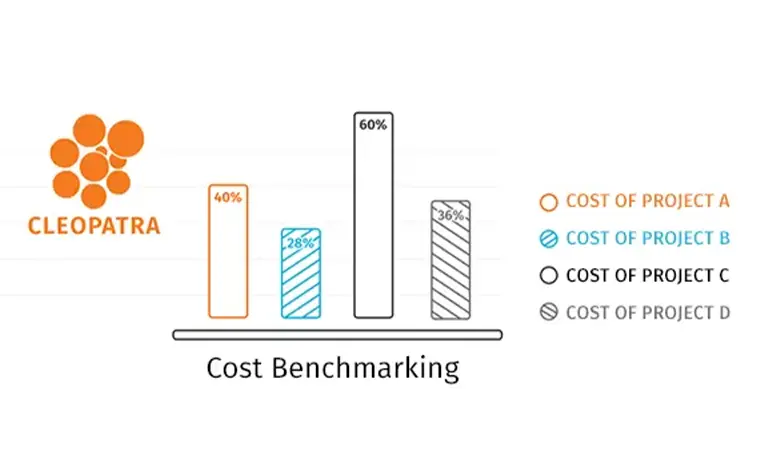
Predictive analytics is transforming how organizations approach cost forecasting and project management. Accurate cost forecasting has always been one of the toughest challenges: budgets are set with the best intentions, but as the project unfolds, unforeseen events, scope changes, and external factors often throw estimates off course.
Leading organizations are using predictive analytics, a data-driven approach that uses past performance and advanced modeling to anticipate what’s likely to happen next.
Instead of reacting to cost overruns after they occur, predictive analytics helps teams see them coming. To harness these insights effectively, organizations need project controls software that integrates predictive analytics into everyday cost management processes.
Understanding Predictive Analytics
Predictive analytics is the use of data, statistical algorithms, and machine learning techniques to forecast future outcomes from past trends. At its core, predictive analytics is about learning from the past to improve the future.
In project cost management, that means looking at years of project history, actual costs, productivity rates, schedule performance, risk data, and using those insights to forecast what’s most likely to happen next.
Imagine being able to answer questions like:
- Which activities are most at risk of overrunning their budget?
- What cost trends are emerging across similar projects?
- How might changes in resource productivity affect the final estimate?
Predictive analytics is based on real data rather than intuition. It turns numbers into foresight, helping project teams make smarter decisions before small issues become major problems.
Benefits of Predictive Analytics
Organizations that adopt predictive analytics for cost management gain a powerful competitive advantage. Here are some of the key benefits:
Greater Cost Forecast Accuracy
By leveraging data from previous projects, predictive models can refine cost estimates based on actual outcomes, not just assumptions. By updating the estimates as the project progresses, this significantly narrows the gap between planned and realized costs.
Early Risk Identification
Predictive analytics acts like an early warning system. When a pattern starts to resemble a known risk scenario, the system can flag it instantly. That means teams can intervene early and prevent costly cost overruns before they escalate.
Smarter Resource Allocation
By forecasting cost and performance trends, predictive models reveal where resources are likely to be over- or under-utilized. This enables better planning and more efficient deployment of manpower, equipment, and capital.
Data-Driven Decision-Making
Forget about “gut feel” budgeting. Predictive analytics empowers project managers and executives to base decisions on real evidence; supported by patterns, probabilities, and trend data.
Continuous Learning
Each completed project adds more data to the model, improving future predictions. Over time, your organization becomes smarter and more accurate, creating a self-reinforcing cycle of improvement.
At Cleopatra Enterprise, we’ve seen firsthand how clients use predictive analytics not just to forecast costs, but to transform how they think about performance, uncertainty, and value creation.
Implementing Predictive Analytics in Project Cost Management
Building predictive capabilities doesn’t happen overnight, but the process can be straightforward when approached step by step. Here’s what it typically looks like:
1. Start with Reliable Data
Predictive models are only as strong as the data they’re built on. That means ensuring project data (costs, schedules, progress metrics, risks) is accurate, complete, and standardized.
Organizations that invest in data quality lay the foundation for every future insight.
2. Integrate Data Across the Lifecycle
True predictive insight comes from connecting data across all phases: estimation, execution, operations, and closeout. With an integrated project controls solution like Cleopatra Enterprise, project data flows seamlessly across disciplines, creating one consistent version of the truth.
3. Develop Predictive Models
Once your data foundation is solid, it’s time to build predictive models. These may use statistical regression, Monte Carlo simulations, or machine learning algorithms, depending on the complexity and scope of your projects.
The goal isn’t just to forecast costs but to understand why those costs might change.
4. Visualize and Communicate Insights
Embedding predictive analytics into dashboards and reports makes trends easy to see and understand. Cleopatra Enterprise, for example, translates complex data models into clear visuals, including inclusions and exclusions, that highlight risks and cost drivers instantly.
5. Foster a Data-Driven Culture
Perhaps the most important step is culture. Teams must trust and embrace data as part of daily decision-making. When predictive insights are used consistently, they evolve from a nice-to-have to a genuine strategic advantage.
Challenges and How to Overcome Them
Of course, implementing predictive analytics comes with its challenges. Common ones include data silos, lack of analytical expertise, and skepticism about automation. But each has a solution.
- Data Silos: Break them down with integrated systems that centralize project data. Cleopatra Enterprise does exactly this, connecting cost, time, scope, and risk data seamlessly.
- Limited Expertise: Start small. That is, pilot predictive analytics on a few projects, build internal champions, and scale from there.
- Resistance to Change: Share early wins, show how predictive insights prevented an overrun or improved forecast accuracy. Nothing builds trust like real results.
Predictive analytics isn’t about replacing human judgment; it’s about enhancing it. When paired with experienced project professionals, data-driven insight becomes a powerful ally for better decision-making.
Predictive analytics enable organizations to move from reacting to anticipating. Instead of discovering problems too late, teams can take preventive action with confidence. Instead of relying on static budgets, they can use dynamic, data-informed forecasts that evolve as projects progress. By combining historical data, real-time performance metrics, and predictive modeling, organizations can forecast with precision and act with foresight.
Project controls software is a tool that is used to measure and control cost and productivity throughout a…
Operational efficiency in project management is about achieving more with less: delivering projects on time and within budget…
Related resources

Cost Benchmarking in Capital Projects: Definition, Benefits, and Examples
In today’s ever-changing markets, large capital projects face increasing pressure to deliver on time and within budget. Project teams need tools and strategies that enable them to compare their performance against proven standards and identify opportunities for improvement. Cost benchmarking is key to achieving this. By systematically comparing project data…
Read blog article
Estimate your projects' costs by looking into your history
Historic project data is often far more valuable than you might think. We provide some examples of how they prove their worth.
Read blog article